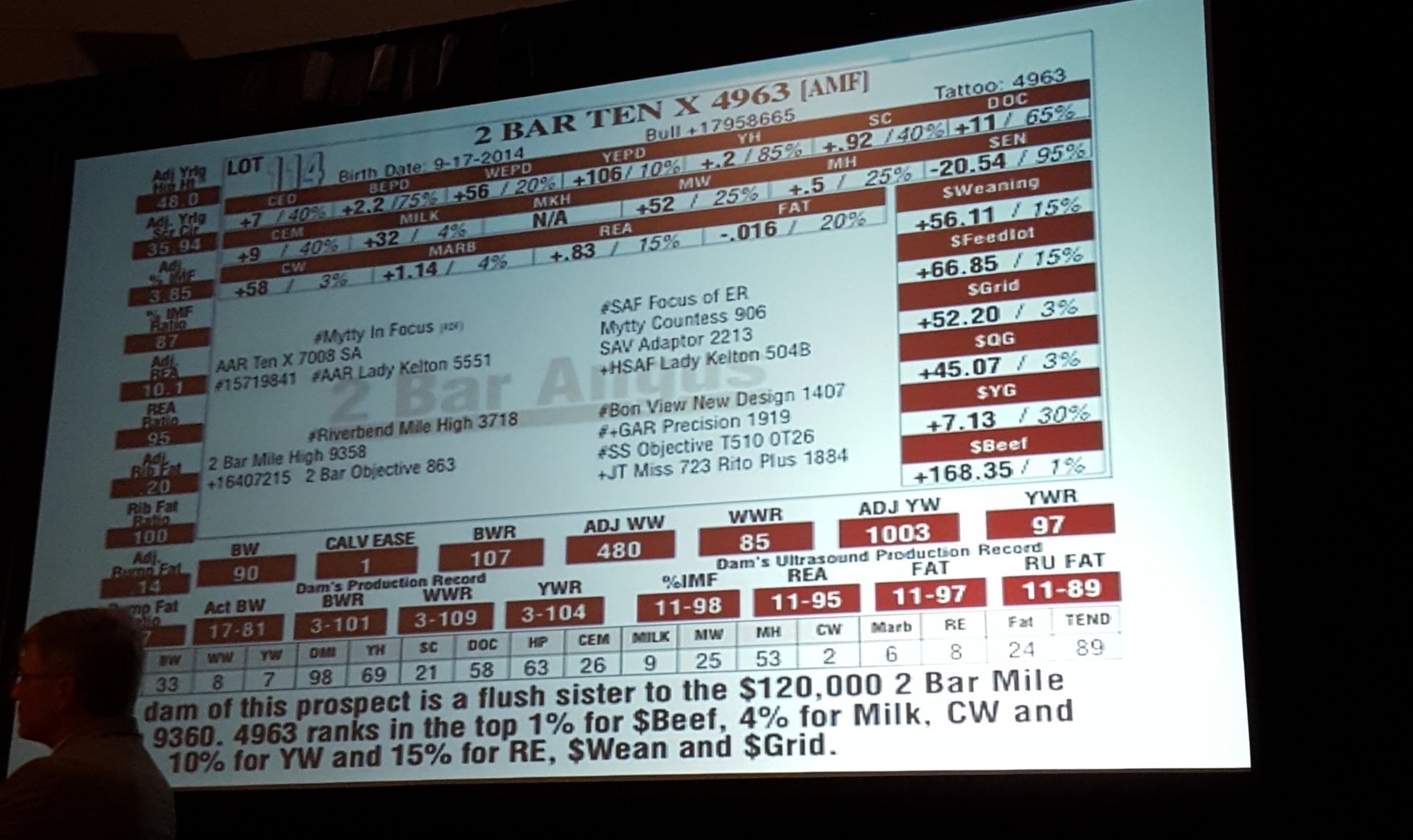Donnell Brown
R. A. Brown Ranch
Darrh Bullock
University of Kentucky
Larry Keenan
Red Angus
In the history of selection, we used used visual appearance and local adaptation to create some breed creation. We then moved to actual performance. We started weighing and measuring cattle. Then scientist used statistics to analyze this data and produce sire summaries and EPDs. We have now added genomics to this process. Prior to the release of Milk EPD there was no change in milking ability in Angus cattle.
We started with visual appraisal. We then did visual + actual weights, visual + adjusted weights, visual + EPDs, visual + EPDs for economically relevant traits, and visual + GE-EPDs. Now, we need to move to visual + economic selection indexes.
Don't overload producers with too much information!
We don't need to be double reporting data. Genomics goes into GE-EPDs; no need to publish genomic percentiles. Indexes simplify the information we present to commercial producers.
Prior to the release of Hereford's BMI index, there was improvement for maternal profit. After the release fo the BMI index, genetic progress was even more rapid.
There was a field-test for $B. They breed two sets of steers. One from a low $B group of bulls and a second from a high $B group of bulls. The value difference predicted from the index was $187. The actual profit differences were greater than $200.
There are terminal, weaning/replacement indexes, and overall indexes.
The industry needs to improve terminal indexes. It is important that we have calving ease direct and feed intake need to be included in these indexes.
There are a small number of weaning/replacement female indexes. These are lacking calving ease maternal. Further we need further improvement in fertility and maintenance EPDs.
There are lots of all-purpose indexes. These carry it all the way through. From conception through slaughter.
Most of these indexes contain a measure of fertility. However, sometimes the EPDs used for fertility are indicators of fertility, and not direct measures of the economically relevant traits. We also need to work on adding feed efficiency to these all-purpose indexes.
Indexes work.
But, there are some keys to successful implementation, which include:
Develop a breeding objective
- Management
- Marketing
- Environment
We need to identify selection index that most closely matches your breeding objectives.
The correlation between $W and $B in Angus is about 50%.
Darrh identified an outlier bull that had a -2 dollar $W and 170 dollar $B.
Don't make the mistake of sitting on the sidelines if the selection index scenario doesn't perfectly match your operation.
Red Angus was one of the last breed associations to adopt selection indexes. Keenan encourages the audience to learn from Red Angus' mistake. Again, don't sit on the side-line.
Do not panic if market values change, selection indexes are very robust.
Herd Builder is Red Angus' all-purpose index. If you look at HB vs HB without CED the correlation between the two is 0.97. If you compare HB vs HB witouth WW or ADG the correlation is 0.93. If you compare HB vs HB without Carcass the correlation is 0.99. If you compare HB vs HB without Carcass of Feedyard, the correlation is 0.89. However, if you remove Stayability from HB, the correlation is only 0.74. This highlights the importance of stayability for profit.
Realize that some traits in an index have thresholds or optimum is not maximum.
What does the future hold for indexes?
Increased number of ERTs
Increased number of selection indices targeted to specific production systems
Improved genetic evaluations due to improved genomics technology and inclusion of commerical data
Multi-breed indices
Take home messages:
Selection indices are simple to use
Facilitate genetic improvement in profitability
Available for major production/marketing systems
Know what is under the hood.
What traits are included?
Is calving ease acceptable for my intended use?
Do I need to select for or monitor additional traits?
Selection indices are robust to economic changes. Use indexes!




Comments